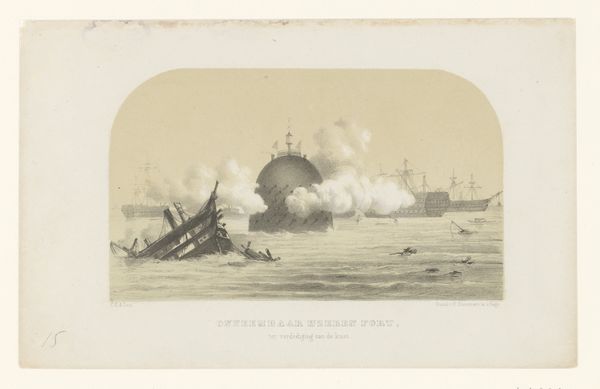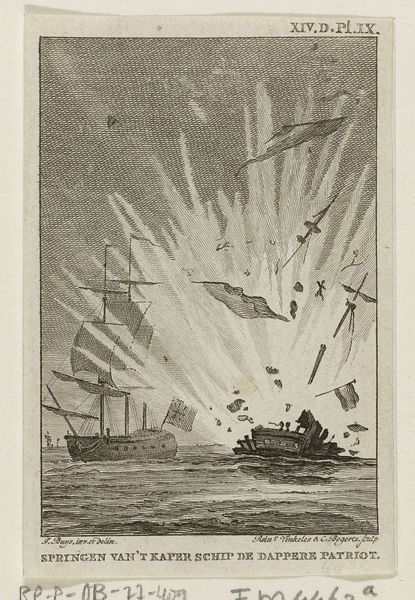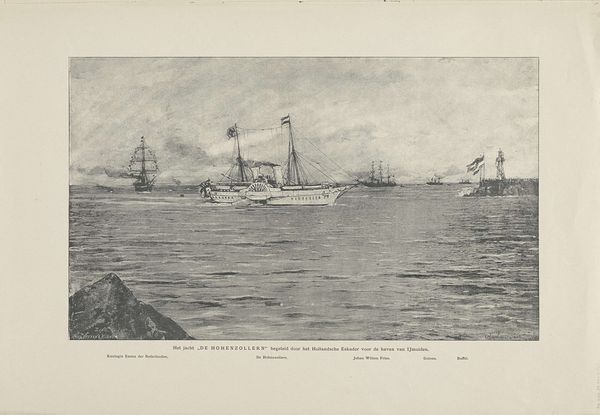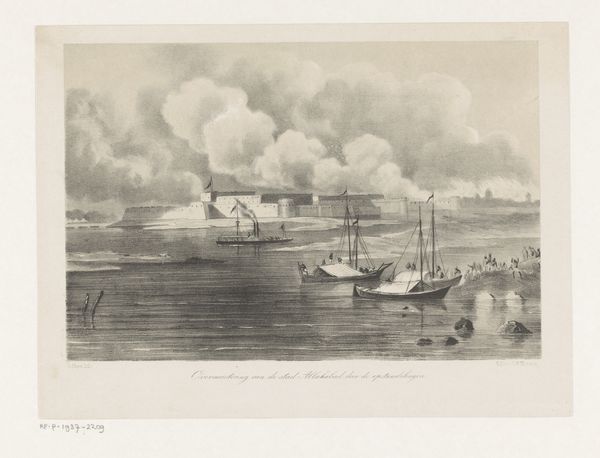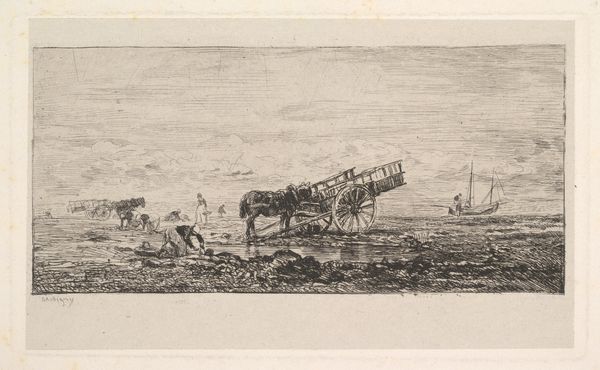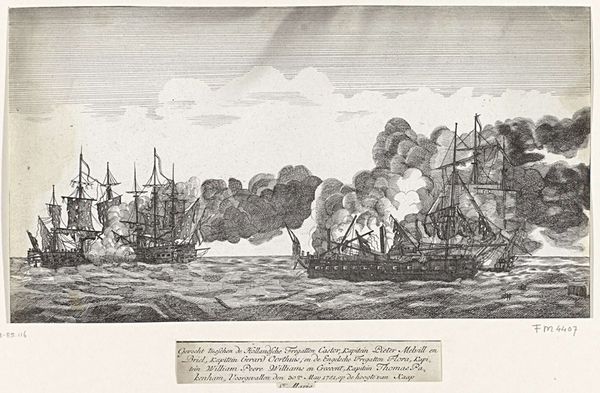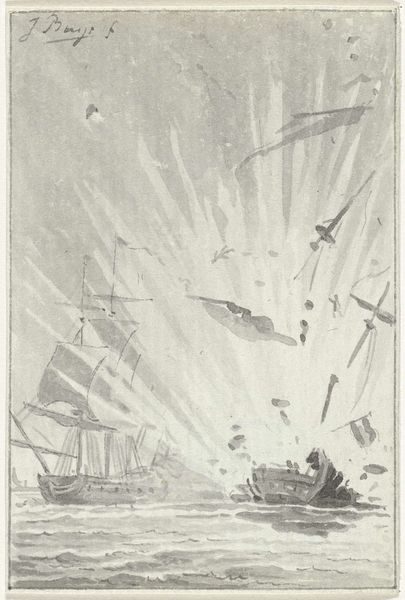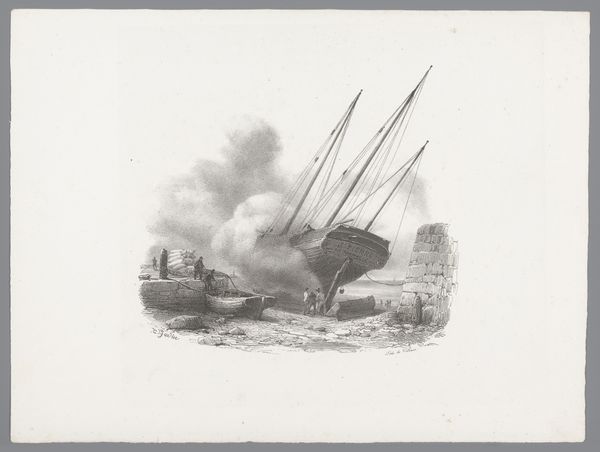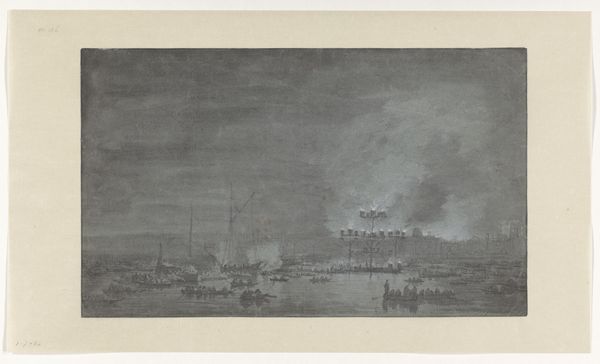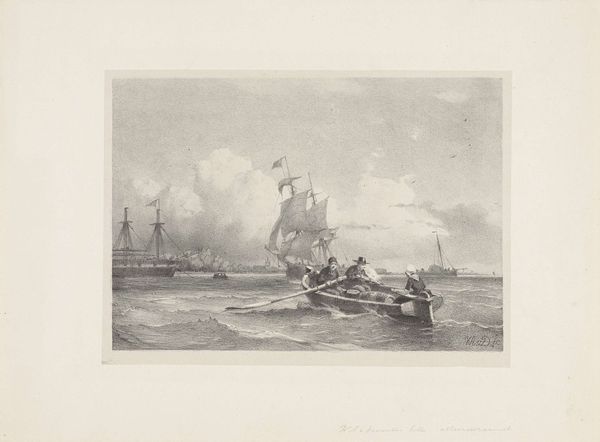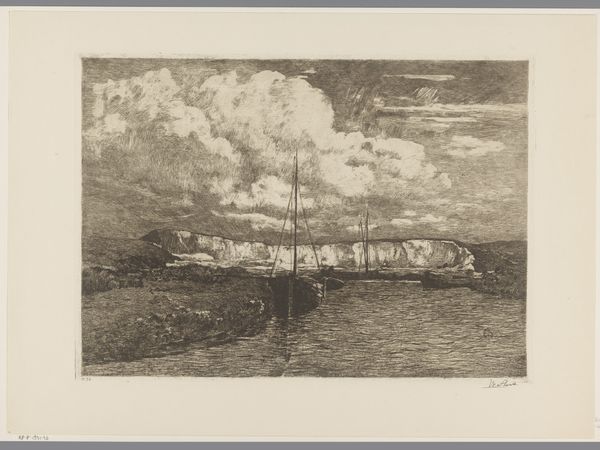
Een schip door een storm op het strand gesmeten, plaat nr. 15, ca. 1700 1690 - 1710
0:00
0:00
print, engraving
#
narrative-art
#
dutch-golden-age
# print
#
pen sketch
#
landscape
#
cityscape
#
engraving
Dimensions: height 164 mm, width 190 mm
Copyright: Rijks Museum: Open Domain
Sieuwert van der Meulen created this print around 1700, using etching and engraving on paper. These printing techniques involve working a metal plate to hold ink, and then using immense pressure to transfer the image to paper. Look closely, and you’ll see the texture created by hundreds, maybe thousands, of tiny engraved lines. This wasn’t just a drawing, it was a feat of labor. Consider the social context: the Dutch Republic in the 18th century, a powerhouse of global trade. The image shows a ship wrecked by a storm, a reminder of the human cost of maritime commerce. By choosing to represent this disaster in a highly crafted medium, van der Meulen elevates the status of the common sailor or merchant, whose livelihoods depended on these vessels. The print underscores the precariousness of life, and the power of the sea, during an age of expanding capitalism. It's a sophisticated commentary embedded in the materiality of the work itself.
Comments
No comments
Be the first to comment and join the conversation on the ultimate creative platform.

